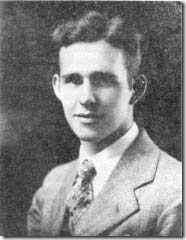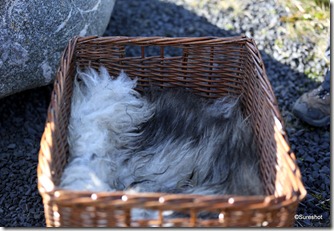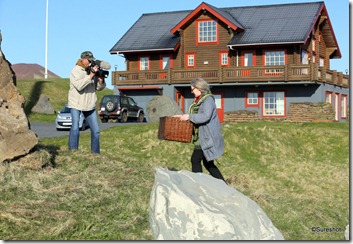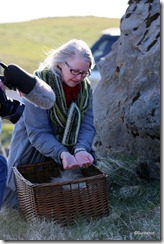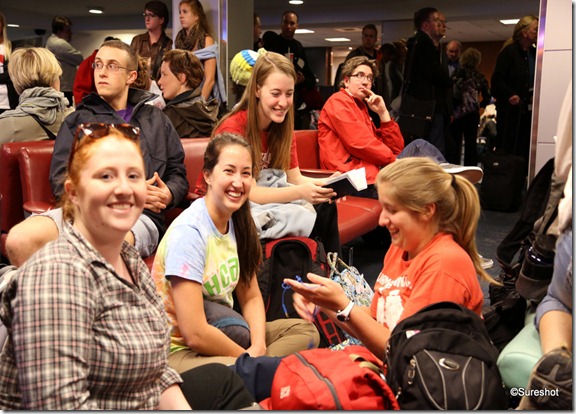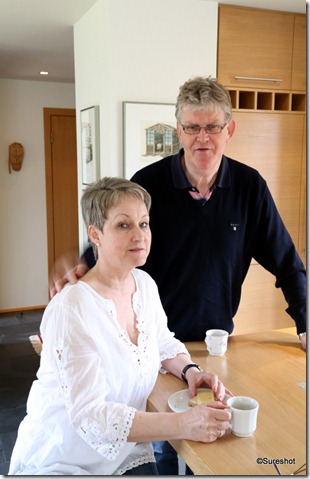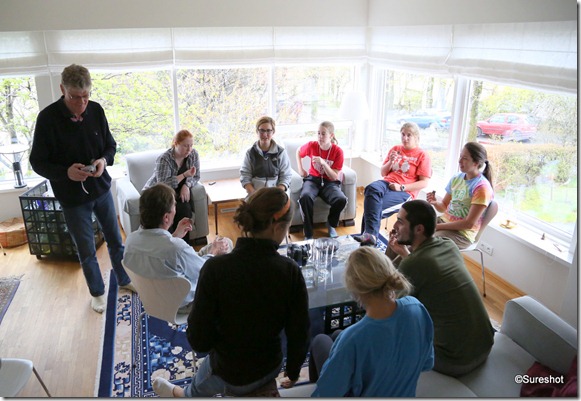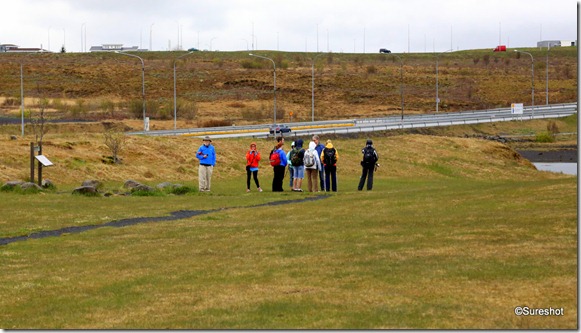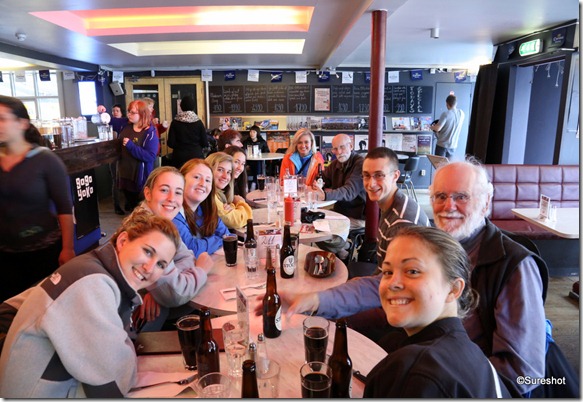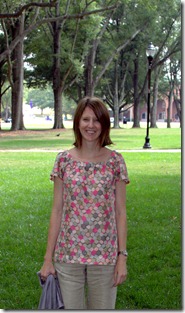By Jenn Summers
Day 1 on Heimaey
 We woke up early and drove out to the southern coast to catch our ferry over to Vestmannaeyar. As we sailed across the short stretch of ocean we chugged past skyscraper cliffs made all the more dramatic by the swooping gulls. It wouldn’t be til later that we thought to look for puffins, which breed out on the cliff outcrops that shelter the harbor. We installed at a cute little hostel with a wooden-walled loft room on the third floor. We shared the whole house with just two Danes, friendly and self-contained. Nice thing about the island’s tiny status is the ability to walk EVERYWHERE. We walked down to the end of the island, small and quaint oft described as harboring “10,000 souls” or so. We headed d
We woke up early and drove out to the southern coast to catch our ferry over to Vestmannaeyar. As we sailed across the short stretch of ocean we chugged past skyscraper cliffs made all the more dramatic by the swooping gulls. It wouldn’t be til later that we thought to look for puffins, which breed out on the cliff outcrops that shelter the harbor. We installed at a cute little hostel with a wooden-walled loft room on the third floor. We shared the whole house with just two Danes, friendly and self-contained. Nice thing about the island’s tiny status is the ability to walk EVERYWHERE. We walked down to the end of the island, small and quaint oft described as harboring “10,000 souls” or so. We headed d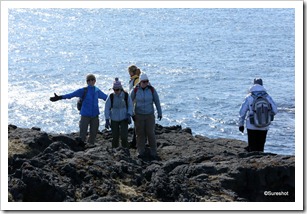 own to the end and ogled the seawater slicing its way through the basalt cliff faces to form a deep turquoise river…mildly breathtaking. Then trotted northward along the coast enjoying the natural sea arches, dead gull on the coast, and frightening precipices plunging into the sea. We were puffin-hunting, but came up short.
own to the end and ogled the seawater slicing its way through the basalt cliff faces to form a deep turquoise river…mildly breathtaking. Then trotted northward along the coast enjoying the natural sea arches, dead gull on the coast, and frightening precipices plunging into the sea. We were puffin-hunting, but came up short.
The hotel that also owns our hostel had it featured on their menu as an appetizer served with whale but we opted to not eat it because of some threats to its population due to overfishing. What we found instead was the fields of a local farmer’s sheep and a long Icelandic horse which we photographed to death. The sun never sets on Iceland so we ambled along until about 7 or so then returned across the island by road. En route was a construction crew arranging a large boulder in the yard of a house with a spectacular coastal view. A kind tall Icelandic man with a professional film camera insisted we come over and explained the rock was being moved by a senator (who our driver Thor later described as an insane thief who is useless and smuggled into office thanks to his party connections) who believes the elves living in the rock saved his life. To thank them, he moved their threatened home – road building requires gravel – to the island (see the other post). They had an impressive (not) elf-speaking woman armed with a wool-stuffed basket and a jar of honey for the elves installing them there. We smiled and nodded through her explanation and spectacle then continued dumbfounded through the town. Dinner then bed.
spectacular coastal view. A kind tall Icelandic man with a professional film camera insisted we come over and explained the rock was being moved by a senator (who our driver Thor later described as an insane thief who is useless and smuggled into office thanks to his party connections) who believes the elves living in the rock saved his life. To thank them, he moved their threatened home – road building requires gravel – to the island (see the other post). They had an impressive (not) elf-speaking woman armed with a wool-stuffed basket and a jar of honey for the elves installing them there. We smiled and nodded through her explanation and spectacle then continued dumbfounded through the town. Dinner then bed.
Day 2: Conquer the Cliff
Conquer it we did. After breakfast during which we all wished a hearty nifty 50 to professor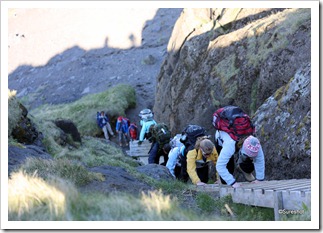 Andersen, we trekked around the harbor to scale the cliff on the northern edge. The reek of drying fish invigorated us as did the cold air and the hopping lambs bleating fearfully as we walked several hundred meters from their perches far up the slopes. It took forever, but we did eventually reach the top, cracking jokes about what kind of elf might live in the particular rock we were clinging to. At first, the trail is nothing but sandy slopes surrounded by unfriendly rock by we cut across the switchback trail and got a beautiful view of the sea and wind weathered tan cliffs. Therapy has nothing on watching the gulls strafe and arch through the air,
Andersen, we trekked around the harbor to scale the cliff on the northern edge. The reek of drying fish invigorated us as did the cold air and the hopping lambs bleating fearfully as we walked several hundred meters from their perches far up the slopes. It took forever, but we did eventually reach the top, cracking jokes about what kind of elf might live in the particular rock we were clinging to. At first, the trail is nothing but sandy slopes surrounded by unfriendly rock by we cut across the switchback trail and got a beautiful view of the sea and wind weathered tan cliffs. Therapy has nothing on watching the gulls strafe and arch through the air, 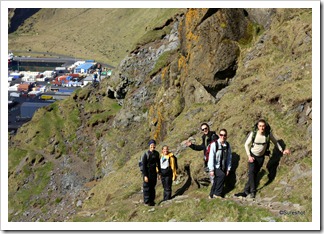 steering along the wind vanes we are bind to with expert tilts of the tail. The panorama from the top which we reached leisurely over an hour and a half just blew me away – a grassy ridge pocked with birds and beauty. Ten thousand photos later we descended and walked over to Toppur Pizza, our favorite local place with pizza, burgers, and our newfound favorite – Skyr cake!. After our little meal we headed back over to the hostel then Sarah Hamilton and I walked out over the lava field formed in the recent eruption in 1973. It was quite impressive covered with Lupin, a purple fuzzy stalk flower we
steering along the wind vanes we are bind to with expert tilts of the tail. The panorama from the top which we reached leisurely over an hour and a half just blew me away – a grassy ridge pocked with birds and beauty. Ten thousand photos later we descended and walked over to Toppur Pizza, our favorite local place with pizza, burgers, and our newfound favorite – Skyr cake!. After our little meal we headed back over to the hostel then Sarah Hamilton and I walked out over the lava field formed in the recent eruption in 1973. It was quite impressive covered with Lupin, a purple fuzzy stalk flower we  were to learn later was invasive, introduced to prevent erosion; just further proof, beauty ha a price! We encountered the birthday boy but played it cool. Suresh had arranged for 2 cakes and a hilarious Roman candle of a birthday candle. We found an awesome beer mitten from icelandic wool at the shop across the street from our restaurant and everyone contributed to Goose’s initial purchase. After everyone had reassembled at the hostel for the celebration after our walk, we sang, drank Amarula (which we convinced Seth to buy) wine, and Tuborg classic beer. Andersen opened his present, we also got him dried fish and Drammur, chocolate covered salted licorice, both of which are traditional Icelandic fare. Everyone got pleasantly tipsy and the party dissolved into side games of Circle of Death while Suresh, Garihan and Seth disappeared until 6 am.
were to learn later was invasive, introduced to prevent erosion; just further proof, beauty ha a price! We encountered the birthday boy but played it cool. Suresh had arranged for 2 cakes and a hilarious Roman candle of a birthday candle. We found an awesome beer mitten from icelandic wool at the shop across the street from our restaurant and everyone contributed to Goose’s initial purchase. After everyone had reassembled at the hostel for the celebration after our walk, we sang, drank Amarula (which we convinced Seth to buy) wine, and Tuborg classic beer. Andersen opened his present, we also got him dried fish and Drammur, chocolate covered salted licorice, both of which are traditional Icelandic fare. Everyone got pleasantly tipsy and the party dissolved into side games of Circle of Death while Suresh, Garihan and Seth disappeared until 6 am.
Day 3: Recovery and Bye to Haimaey
We woke up without any definite plan but with several hungover people so I wandered up the street to the hotel’s buffet breakfast. Sluggishly the backstory of Suresh’s expedition fleshed out: they climbed up to the crater from the ’73 eruption and spent the night catching footage of the sunset and rise (which are separated by a very brief period of a few hours). 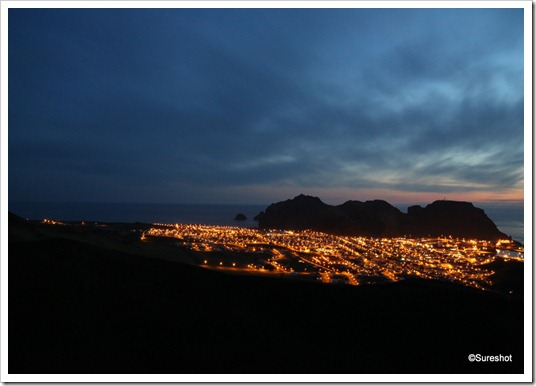
Their sojourn was warmed by the heat vents fueled by the angry magma boiling below our feet. We finally got everyone organized and ready to go by about 1130 then headed through a 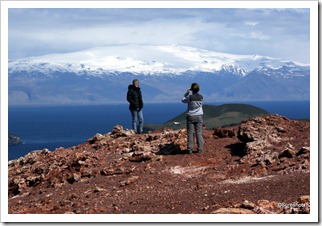 backyard to the next street to get some sandwiches and pastries from the local bakery for eating on top of the crater. We walked along the neighborhood streets south toward the “Pompei of the North” which is an excavation site of a street of 5 or 6 of the 400 houses buried in the eruption. It was very interesting, about 20 meters deep ash and other material blown out of the crater – no lava at the point of the excavation. We then hiked back up towards the crater, which is the volcano Eldfell.
backyard to the next street to get some sandwiches and pastries from the local bakery for eating on top of the crater. We walked along the neighborhood streets south toward the “Pompei of the North” which is an excavation site of a street of 5 or 6 of the 400 houses buried in the eruption. It was very interesting, about 20 meters deep ash and other material blown out of the crater – no lava at the point of the excavation. We then hiked back up towards the crater, which is the volcano Eldfell. From the top is an incredible view; the walk up is bleak, crunching along on little balls of volcanic matter gravel that slides off the path down the steep slope clinking along like glass against their fellows. The vents at the top are indeed warm, a nice reprieve from the icy wind. After, we headed down the mountain, to the hostel, to the ferry, to the mainland, on the bus again with Thor. We parked in next to a very random waterfall pouring down from 60 meters up off the edge of a cliff. The cliff belongs to a nearly flat-topped mountain that launches itself out of an otherwise unassuming sandur plain, making the waterfall stand out with its suddenness and
From the top is an incredible view; the walk up is bleak, crunching along on little balls of volcanic matter gravel that slides off the path down the steep slope clinking along like glass against their fellows. The vents at the top are indeed warm, a nice reprieve from the icy wind. After, we headed down the mountain, to the hostel, to the ferry, to the mainland, on the bus again with Thor. We parked in next to a very random waterfall pouring down from 60 meters up off the edge of a cliff. The cliff belongs to a nearly flat-topped mountain that launches itself out of an otherwise unassuming sandur plain, making the waterfall stand out with its suddenness and  starkness.We continued along the road, stopped off at an amazing view of the glacier which had an unfortunate explosion underneath it in 2010.
starkness.We continued along the road, stopped off at an amazing view of the glacier which had an unfortunate explosion underneath it in 2010.  We examined some ash along the road and then set off again, not stopping for a while until we reached an amazing fairytale like waterfall planted at the beginning of an epic hiking trail that extends all the way up onto the glacier. We just climbed out along the top and edge of the waterfall looking down at the slightly sheltered cove of the falls. Our final stop was the quaint fishing village of Vik – at the local restaurant we tried hombaked bread and the best lamb sandwiches you ever ate. Bed at the hostel, up on a hill, modernly furnished and a little crowded.
We examined some ash along the road and then set off again, not stopping for a while until we reached an amazing fairytale like waterfall planted at the beginning of an epic hiking trail that extends all the way up onto the glacier. We just climbed out along the top and edge of the waterfall looking down at the slightly sheltered cove of the falls. Our final stop was the quaint fishing village of Vik – at the local restaurant we tried hombaked bread and the best lamb sandwiches you ever ate. Bed at the hostel, up on a hill, modernly furnished and a little crowded.
See the whole album here


 Professor Brannon Andersen, Ph.D., has been awarded a Fulbright Scholarship for teaching and research at the University of Zadar in Croatia during the 2014-15 academic year.
Professor Brannon Andersen, Ph.D., has been awarded a Fulbright Scholarship for teaching and research at the University of Zadar in Croatia during the 2014-15 academic year.